Современное проектирование на С++ Ссылки
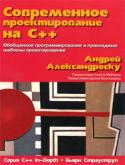

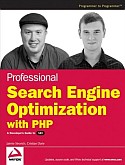

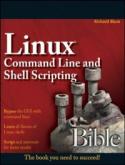
There's a lot to be said for going back to basics. Not only does this Bible give you a quick refresher on the structure of open-source Linux software, it also shows you how to bypass the hefty graphical user interface on Linux systems and start interacting the fast and efficient way—with command lines and automated scripts. You'll learn how to manage files on the filesystem, start and stop programs, use databases, even do Web programming—without a GUI—with this one-stop resource.

The only problem with this popular testing tool was
its lack of documentation-until now, that is. For this, O'Reilly went
right to the source, as Sebastian Bergmann, the author of PHPUnit Pocket Guide,
also happens to be PHPUnit's creator. This little book brings together
hard-to-remember information, syntax, and rules for working with
PHPUnit. It also delivers the insight and sage advice that can only
come from the technology's creator. Coverage of testing under agile
methodologies and Extreme Programming (XP) is also included.
The latest in O'Reilly's series of handy Pocket Guides, this quick-reference book puts all the answers are right at your fingertips. It's an invaluable companion for anyone interested in testing the PHP code they write for web applications.

This book is for professional software engineers looking to move their ideas and applications into the mobile space with Android. The author assumes the reader has a passable understanding of Java. They should be able to write classes and handle basic inheritance structures. This book also targets hobbyist developers looking to negotiate the complex minefield of mobile software.
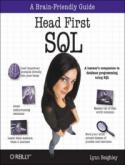
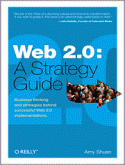
Web 2.0 makes headlines, but how does it make
money? This concise guide explains what's different about Web 2.0 and
how those differences can improve the bottom line. Whether you're an
executive, a small business owner, or an entrepreneur, Web 2.0: A Strategy Guide
illustrates through real life examples how various businesses are
creating new opportunities on today's Web. This book is about strategy
rather than the technology itself.Web 2.0 makes headlines, but how
does it make money? This concise guide explains what's different about
Web 2.0 and how those differences can improve your company's bottom
line. Whether you're an executive plotting the next move, a small
business owner looking to expand, or an entrepreneur planning a
startup, Web 2.0: A Strategy Guide illustrates through real-life examples how businesses, large and small, are creating new opportunities on today's Web.This book is about strategy. Rather than focus on the technology, the
examples concentrate on its effect. You will learn that creating a Web
2.0 business, or integrating Web 2.0 strategies with your existing
business, means creating places online where people like to come
together to share what they think, see, and do. When people come
together over the Web, the result can be much more than the sum of the
parts. The customers themselves help build the site, as old-fashioned
"word of mouth" becomes hypergrowth.

The practice of enterprise application development has benefited from the emergence of many new enabling technologies. Multi-tiered object-oriented platforms, such as Java and .NET, have become commonplace. These new tools and technologies are capable of building powerful applications, but they are not easily implemented. Common failures in enterprise applications often occur because their developers do not understand the architectural lessons that experienced object developers have learned.
Patterns of Enterprise Application Architecture is written in direct response to the stiff challenges that face enterprise application developers. The author, noted object-oriented designer Martin Fowler, noticed that despite changes in technology--from Smalltalk to CORBA to Java to .NET--the same basic design ideas can be adapted and applied to solve common problems. With the help of an expert group of contributors, Martin distills over forty recurring solutions into patterns. The result is an indispensable handbook of solutions that are applicable to any enterprise application platform.
This book is actually two books in one. The first section is a short tutorial on developing enterprise applications, which you can read from start to finish to understand the scope of the book's lessons. The next section, the bulk of the book, is a detailed reference to the patterns themselves. Each pattern provides usage and implementation information, as well as detailed code examples in Java or C#. The entire book is also richly illustrated with UML diagrams to further explain the concepts.
Armed with this book, you will have the knowledge necessary to make important architectural decisions about building an enterprise application and the proven patterns for use when building them.
The topics covered include:

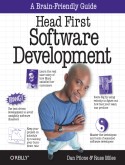
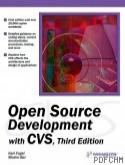
The best available compromise is the concurrent versioning system (CVS), which introduces proctored code merging into source code management. CVS is ideally suited for worldwide open-source development, and the world is ready for monographs that address the management issues that Per Cederqvist explicitly avoided in his fine 164-page postscript manual distributed with the CVS tar-ball. What is the role of a maintainer/manager in establishing test protocols for code merges? What minimal functional level of developer communications is necessary for merges to remain stable? Is a maintainer-less release possible?
These questions go largely unanswered in Karl Fogel's new Open Source Development with CVS. Fogel's 300-page book consists of chapters alternating between CVS basics and common code maintenance issues. He includes a few anecdotes from open-source lore and lots of nonspecific commonsense guidelines on team software development.
Fogel is at his best when he is engaging us in thinking about what should and should not be under CVS control. He points out that complex relationships exist between developing code and its dependencies on intimately related applications, such as build tools themselves (gcc, autoconf) or partner applications (e.g., the server's client or the client's server). His brief discussion of strategies is too short to be satisfying.
Frustratingly, this book is chock-full of postmodern self-indulgences, such as his boasting reverence for technological ignorance. The discipline needed by good maintainers is missing here; Fogel's informal prose is often grating, and his copious parenthetical remarks are distracting or bullying (they sure are); one wonders where his editor was. Ultimately, his management arguments boil down to an endorsement for the benevolent dictatorship model--a safe conclusion, but one that seems not to use CVS's merging capability for all it's worth. To the question of how to run a project, he responds, "Well, we're all still trying to figure that out, actually." True, and he isn't there yet, but at least he has the questions right. --Peter Leopold --This text refers to an out of print or unavailable edition of this title.